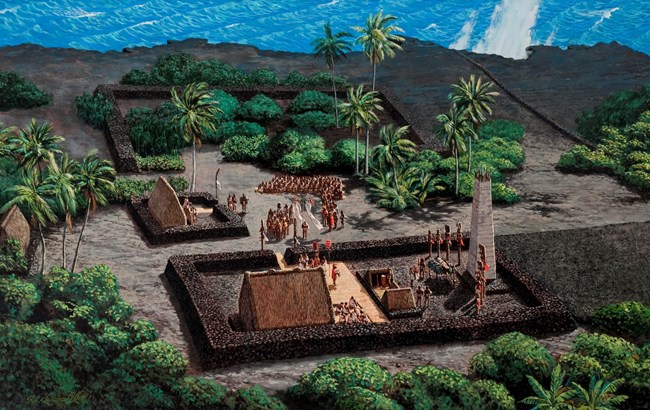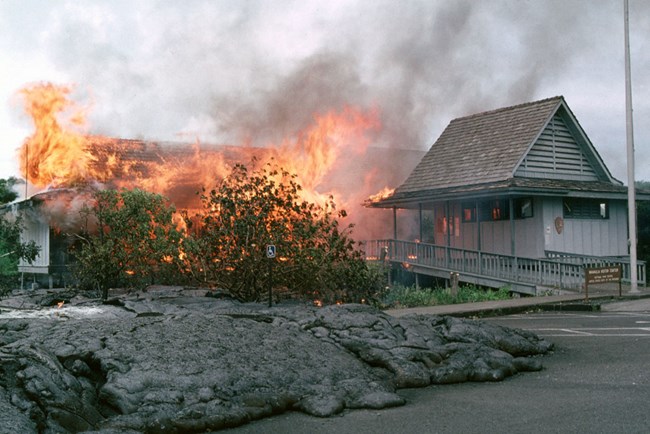|
For nearly five centuries, one of the most significant cultural sites in all of Hawaii sat on the coastline of what is now Hawaiʻi Volcanoes National Park. Wahaʻula Heiau was a luakini temple, meaning that it was used for human sacrifice. Now buried under lava, it was the first temple of its kind in Hawai'i and the last one to be dismantled when the formal religion came to an end in 1819. 
Upon his arrival around 1400 AD, Pā'ao was received as a chief by the people of Hawaiʻi. After some time, Pā'ao told the chiefs that they had weakened and degraded their bloodlines by mingling with the commoners, forfeitting their divine right to rule. Pā'ao returned to Kahiki seeking a chief who would strengthen the Hawaiian chiefs' blood and ties with the gods. He returned to Hawaiʻi with the chief Pili, landing on the coast of Puna. Pili became established as the new chief and Pā'ao became his high priest. 

Modern HistoryThe Congressional Act of June 20, 1938 officially added the Kalapana Extension Lands to Hawaii National Park, now Hawaiʻi Volcanoes National Park. In doing so, one of the most traditionally significant sites of Hawaii was added to an already geologically unique area. In 1966, the National Park Service built a visitor center located only 150 feet from the site of the heiau. |
Last updated: May 4, 2021
